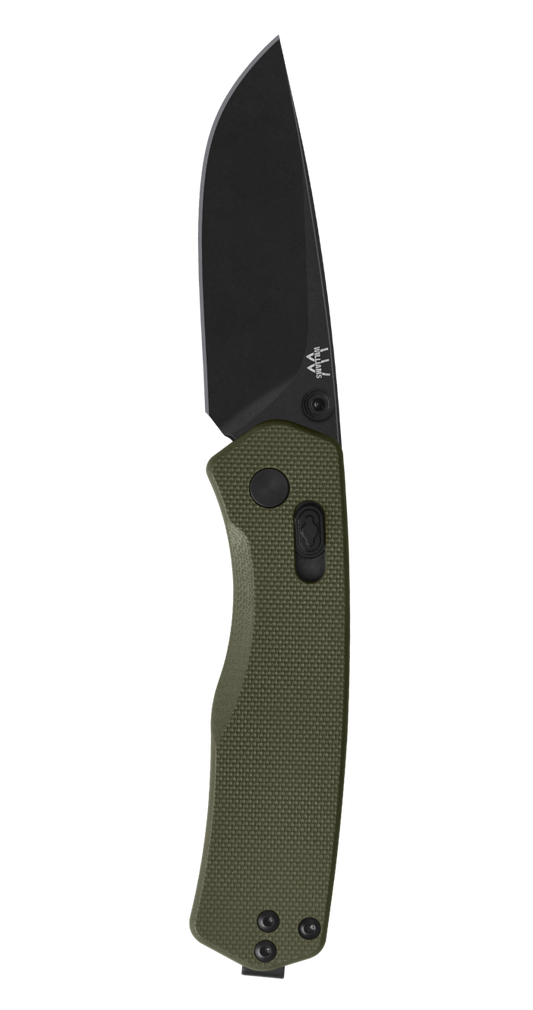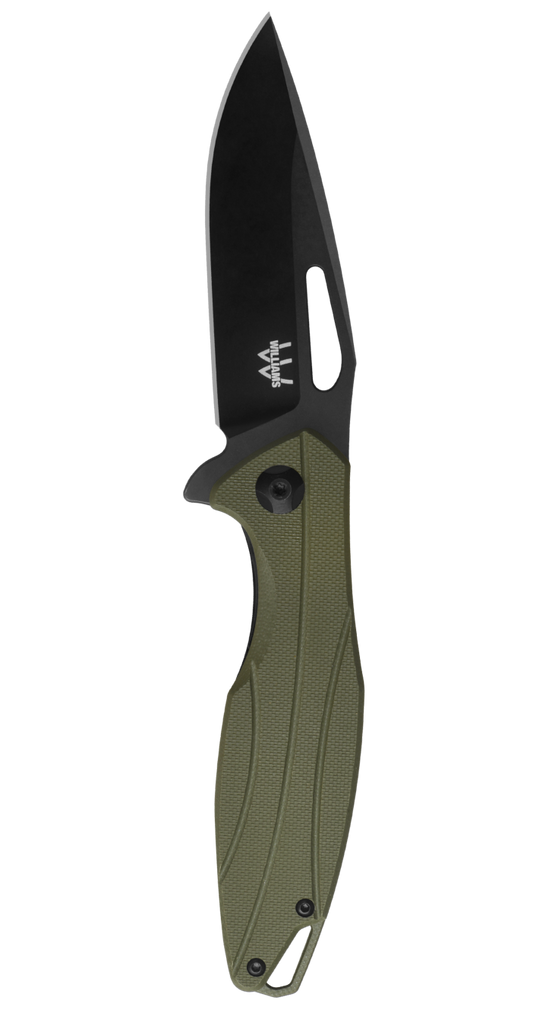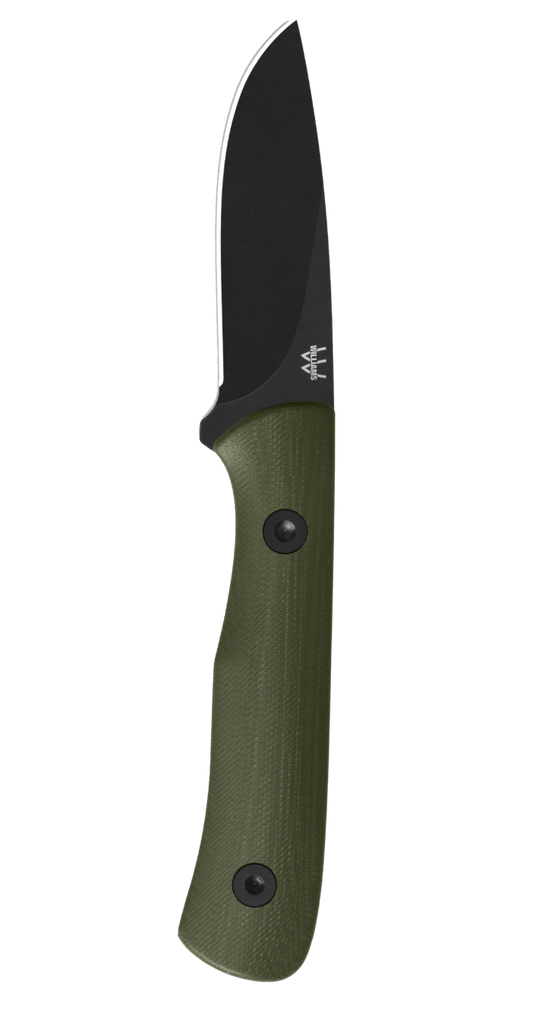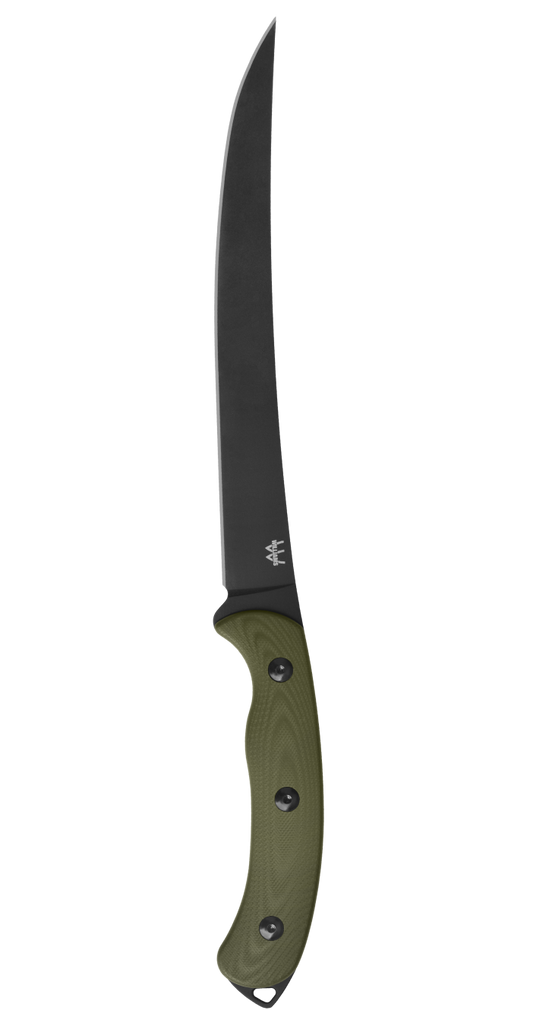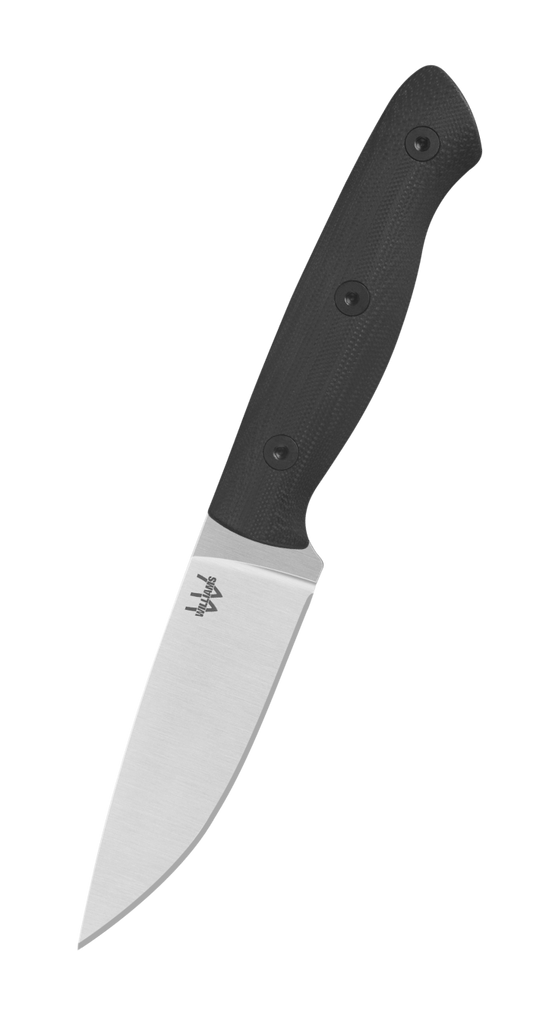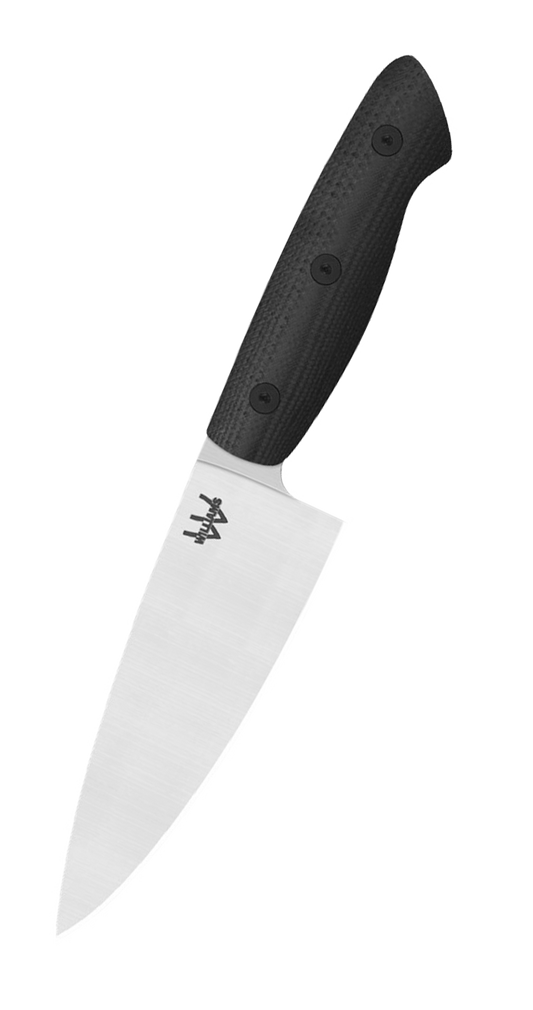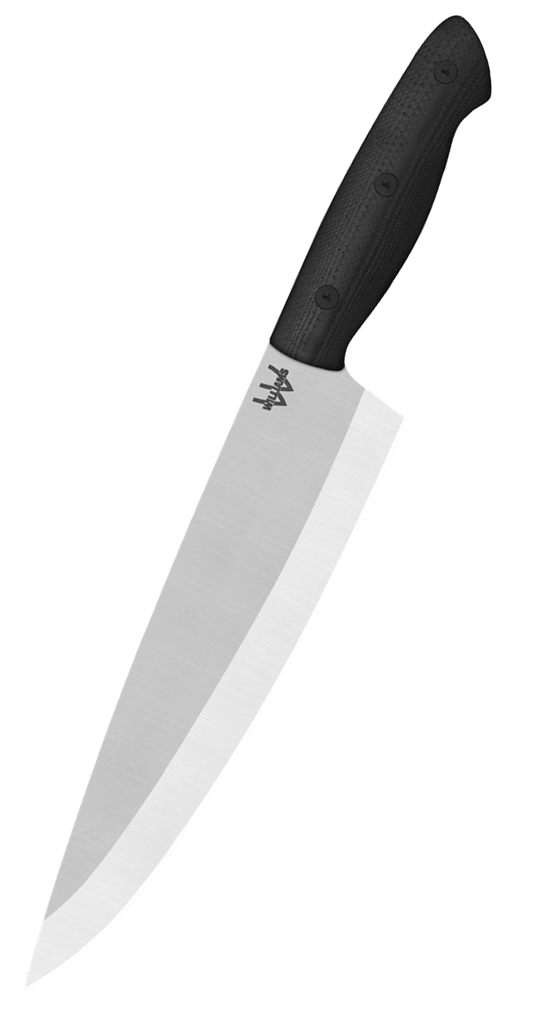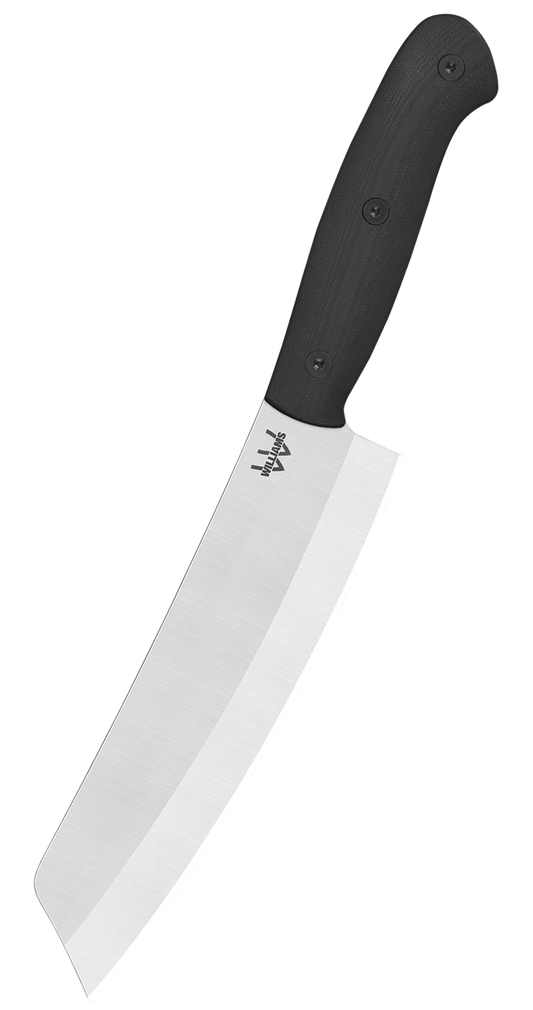Every home cook and professional chef needs the right knives to work efficiently in the kitchen. While you could fill your kitchen with dozens of specialized blades, there are four essential knife shapes that will handle 95% of your culinary tasks. Understanding these knife shapes and their purposes will help you build a functional, versatile knife collection.
1. The Chef's Knife: Your Kitchen Workhorse
The chef's knife is the most versatile tool in your kitchen. With a blade typically 8 to 10 inches long, this knife handles everything from chopping vegetables to slicing meat and mincing herbs. The curved blade allows for a rocking motion that makes repetitive chopping tasks faster and more efficient.
Our Big Chef knife features an 8-inch blade crafted from high-carbon steel that holds a razor-sharp edge. The ergonomic G-10 handle provides comfortable grip during extended prep sessions, and the full tang construction ensures durability for years of daily use.
A quality chef's knife should feel balanced in your hand, with the weight distributed evenly between the blade and handle. This balance reduces hand fatigue and gives you better control over your cuts.
2. The Cleaver/Chopper: For Heavy-Duty Tasks
When you need to break down larger cuts of meat, chop through bones, or tackle tough vegetables like butternut squash, a cleaver or chopper is essential. The thick, heavy blade provides the weight and strength needed for these demanding tasks.
The Chopper combines the functionality of a traditional cleaver with refined craftsmanship. The wide blade is perfect for crushing garlic, transferring chopped ingredients from cutting board to pan, and handling heavy-duty chopping tasks that would damage a thinner blade.
Don't limit your cleaver to just meat processing - it's also excellent for breaking down whole chickens, chopping through thick-skinned vegetables, and even crushing spices.
3. The Paring/Prep Knife: For Detailed Work
A paring or prep knife is your go-to tool for detailed, precise work. With a blade typically 3 to 4 inches long, this small knife excels at peeling fruits and vegetables, deveining shrimp, removing seeds, and other intricate tasks where a larger knife would be unwieldy.
The Petty Knife serves as the perfect prep knife for detailed culinary work. Its compact size gives you exceptional control for trimming, peeling, and precision cutting. The sharp blade makes quick work of tasks like segmenting citrus, hulling strawberries, or creating garnishes.
Keep your paring knife sharp - because you're working with smaller ingredients and doing detailed work, a dull blade is both frustrating and dangerous.
4. The Carving Knife: For Slicing and Serving
A carving knife features a long, thin blade designed for slicing cooked meats, poultry, and roasts. The narrow blade creates less resistance as it cuts, allowing you to make thin, even slices that look beautiful on the plate.
Whether you're carving a Thanksgiving turkey, slicing a prime rib roast, or portioning a smoked brisket, a dedicated carving knife makes the job easier and produces better results than trying to use your chef's knife.
Building Your Knife Collection
Start with these four essential shapes, and you'll be equipped to handle virtually any kitchen task. Quality matters more than quantity - invest in well-made knives that will last for years rather than filling your kitchen with cheap blades that need constant replacement.
Explore our complete culinary knife collection to find the perfect knives for your kitchen. Each knife is handcrafted with premium materials and designed to deliver professional-level performance for home cooks and chefs alike.
With the right knife shapes in your kitchen, you'll work more efficiently, enjoy cooking more, and achieve better results with every meal you prepare.


